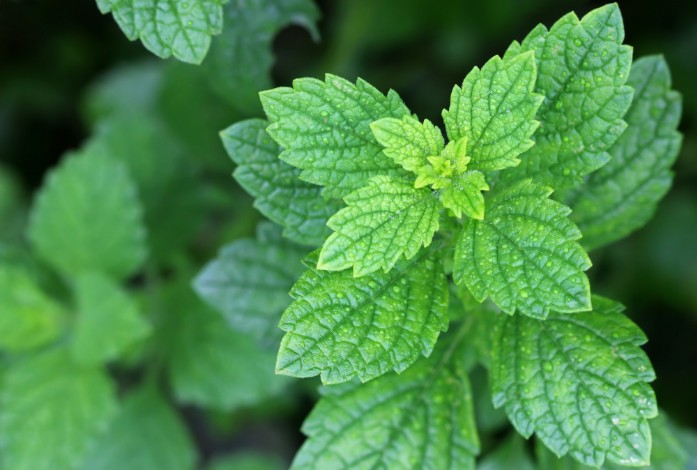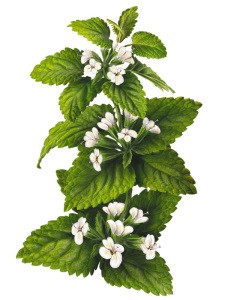Lemon Balm
Herbs A-Z > Know your herbs
Lemon balm - Melissa officianalis

Lemon Balm - Melissa officianalis
Lemon balm (also known as common balm or balm-mint) is a common member of the mint family or Lamiaceae, so called because it smells strongly of lemon zest when bruised or in warm sunshine. It has a mention in the 1596 Herbal of John Gerard (‘Bawme’) and was reportedly growing in his herb garden.The plant comes from all over Europe and Central Asia and is adapted to most soils and environments, even shade. Lemon balm is a tough, vigorous perennial, growing to 70-150cm as a low clump with small white or pale pink flowers in summer.
Lemon balm in food
The herb is used as a flavouring in ice-cream, candies, stewed fruit, rice or fish dishes and makes a fine pesto. It is also used to make a mild tea and is dried for herbal supplements. Lemon balm is the main ingredient of Carmelite Water, an alcoholic extract of herbs formulated by the Carmelite Nuns from the Abbey of St. Just in the 1300’s.
Lemon balm in medicine
Lemon balm has a soporific effect on the nervous system and the skin. Amongst the claims for it are that it rests the mind, aids peaceful sleep and prevents anxiety. A placebo-controlled study in Germany demonstrated its beneficial effect for women and children experiencing disturbed sleep. Alternatively, lemon balm is also used to increase brain alertness. Oil of lemon balm is used in aromatherapy to aid sleep and for gastro-intestinal complaints.
Lemon balm is still added in face-creams for its soothing effect on the skin. The first cosmetic use of lemon balm goes back to the 1300’s when the Queen of Hungary used it on her face to erase wrinkles and it is still recommended for soothing the skin and reducing fine lines. Extract of lemon balm is also used in the perfume industry and in toothpaste.

Properties of Lemon Balm
Eugenol, a powerful antioxidant, is found in lemon balm. Tests have shown the substance to play a role in memory function. Antioxidants keep our cells safe from free-radical damage. Other significant antioxidants present include rosmaric acid, ferulic acid, caffeic acids, and quercetin, which plays a part in protecting the liver from toxin damage.
Notes on the cultivation of Lemon balm
Lemon balm seeds require light and at least 20 °C to germinate. Lemon balm grows in clumps and spreads vegetatively (from roots) as well as by seed, and does not require a rich soil. In the Physic Garden, the stems of the plant die off at the start of the winter, but shoot up again in spring. Lemon balm grows vigorously; it should not be planted where it will spread or seed into other plantings.
